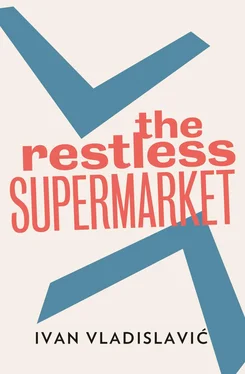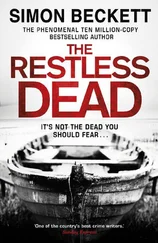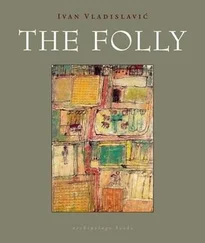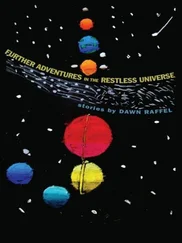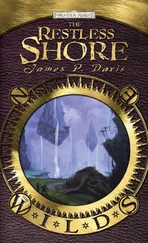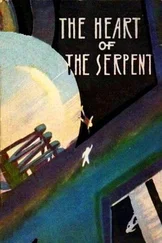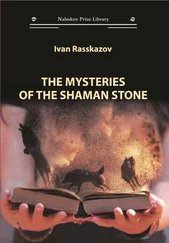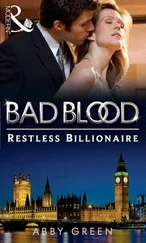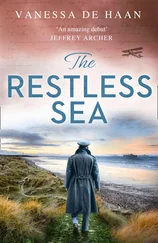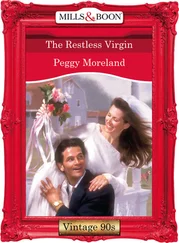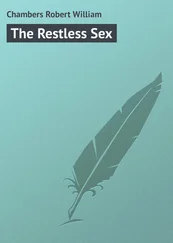The start of the tour was tiresome but innocuous. We ranged ourselves upon trailers, along with the other paying guests — two dozen of us all told, mainly mommies, daddies and little ones — and a tractor dragged us about from cage to cage. Those who had heeded the advice to bring their torches were able to rouse the nocturnals from their slumbers (evidently they were prone to unnatural behaviour) by shining the beams in their faces, while our guide, a nasal young woman dressed for a safari, provided us with useful information about their habits and habitats. I busied myself proofreading the little notices appended to each cage and maintaining an appearance of enjoying myself. I wouldn’t have them calling me a stick in the mud.
When we had finished eyeballing the owls, an encounter that should have signalled the end of our tour, our guide announced that there was a treat in store for us. Whispering excitedly, we were conveyed to a cage concealed in a grove of trees in a distant corner of the gardens, and encouraged to winkle out the creature contained therein. Something vicious, to judge by the thickness of the bars, and the moat and railings that kept us at a distance.
Fingers of light probed between the bars. What was that? A table and chairs! A premonitory shiver passed through our party. A television set? A painting suspended in thin air. A kettle. The torch-beams slipped from object to object, settled on a bed in one corner of the cage, where something lay sleeping under blankets. After a while, the blankets were tossed back and a face appeared. Everyone twittered.
I turned my attention to the signpost: ‘Homo Sapiens. Mammal. Typical male (1.75 m, 76 kg). Omnivorous, omnipotent, omnipresent. Hunts profligately, including its own kind. Considered the most dangerous and destructive of all species …’ Profligately. That was good.
The man in the cage sat up on the edge of his bed and gazed back at us with an expression compounded of suspicion, belligerence and boredom. I recognized the look: it was the same one we had seen on the faces of a dozen other animals in the past hour or two. Very cleverly captured. He must be an actor.
Abruptly, he lost all interest in us and stood up. Underpants, thank heavens. The members of our party, Merle not excepted, were engrossed, nudging one another and leering, like schoolchildren studying the reproductive system, as he crossed to the other side of the cage and opened the door of a refrigerator. An eerie, artificial light fell upon his body. Our guide seemed to be training the beam of her torch upon his loins.
The human animal — the term the guide urged us to use when we addressed our questions to her — removed a bottle from the refrigerator, slammed the door shut and went to sit in a chair. He switched on a lamp, took up a remote-control device and pressed a button. The television set started to life in the other corner of the cage. He stared at the screen and drank from the bottle.
While the others asked jokey questions — what does it eat? where does it relieve itself? does it talk? — I had time to examine my own feelings. I felt — what would capture it — threatened? No, that was too reminiscent of ‘endangered’. Certainly not merely affronted. I felt — I had to stop myself from quaking — that we were in mortal danger . We were on the verge of extinction, I realized, and the fact seemed chillingly explicit. But what did I really mean? Who were ‘we’? The human race? People of good sense and common decency? The ragtag remnants of the Café Europa? Was it a royal ‘we’?
These were hardly the circumstances in which to consider such questions; in any event, while I was musing, scientific enquiry had turned, as it invariably does when the wrong minds engage in it, to mockery. There was something about the human animal’s disdain for us, the lack of a reciprocal interest to compensate for our own morbid curiosity, that was extremely provocative. Predictably, Wessels, who had never shown much self-control, was among the first provoked — although Merle assured me afterwards that he was not entirely to blame for what followed. She said a child had tossed a pebble at the animal to attract his attention. He ignored us. A little fusillade of twigs and sucking sweets rained down on him. A coin struck him on the shoulder, but still he gazed blankly ahead.
It was Wessels who flicked a cigarette end through the bars. The reaction was explosive. The man leapt up, brandishing a club that had been hidden behind the chair, and hurled himself at us. He struck the bars a mighty blow, so violently that we started back in fright. A single metallic note resounded into the night. I wish Mevrouw Bonsma had been there to capture that sound precisely. All I can say is that it was deep, sonorous, and filled with rage.
The note subsided, calando, into a stunned silence.
Then a cackling and cawing arose in the cages all around and rippled outwards. At the same time, one of the children in our party, perhaps the one who had started it all, began to cry, which made the adults laugh. Merle giggled, the Bogeymen chattered like apes. I hesitate to say it, but only I fell back in shame, while the cacophony of grunts and cries rolled out over the treetops, and the man in the cage, switching off the television set and then the lamp, went back to bed.
‘Good Lord, Aubrey,’ Merle said, when we were enduring the campfire coffee and buttermilk rusks that concluded the tour and came with the price of the ticket, ‘you look like you’ve seen a ghost. You mustn’t overdo it.’
‘I’m not much of a night owl,’ I might have said.
‘You know what would hit the spot?’ Wessels said. ‘A slice of Mrs Mav’s balaclava.’
It was my fault, teaching him ‘baclava’. To stop him calling it shredded wheat.
Merle insisted that Zbignieuw sit in front on the way home. In the car she touched my hand, and declared it as rough as sandpaper. ‘You’re so dry, I could write on you.’
‘Dermatographic, you mean?’ Always wanted to drop that into a conversation.
‘You need moisturizing,’ she said, and produced from her bag a bottle of Vaseline Intensive Care.
*
12 October 1989
Dear Sir,
Allow me to respond to your article of 10 October entitled ‘Beastly nature on public display’, in which you applaud the exhibition of a ‘human animal’ in a cage at the Zoological Gardens.
This spectacle, well intentioned though it may be, does nothing but harm.
It upsets the true animals. On the night of our visit, we found the nocturnals sleeping, while the diurnals paced their enclosures in insomniac despair or tossed about on their pallets counting sheep.
It degrades the visitor. What message are we sending to our young people? That they are no better than apes? Whereas this ‘human habitat’ was equipped with all the modern conveniences, such as a refrigerator and a television set, there was no sign of a book. It might have been an idea to include some reading matter as part of the ‘natural world’.
It augments the tide of exhibitionism, which is one of the evils of our day.
It damages race relations. Was it wise to choose a black man? Apart from the question of just what sort of man might be regarded as ‘typical’ of the species, this display provides easy ammunition for South Africa’s extremist critics abroad.
Sincerely, etcetera
*
It was around this time that Mrs Mavrokordatos got the idea of staying open all night. A 24-hour service! You’d think we were the Restless Supermarket, I told her, or the Zoological Gardens. And I warned her of the consequences. Indigents will be coming in to find shelter, dozing off in our chairs and slobbering on the upholstery.
Eveready can go round waking them up, she said.
The new regimen threw everything out of kilter. Proper dining hours went by the board. In place of square meals such as breakfast and lunch came bastardized forms of dining, like the so-called brunch, which was neither fish nor fowl, and the buffet, named after the battering the well-mannered could expect to receive in the scrummage for unequal portions.
Читать дальше
